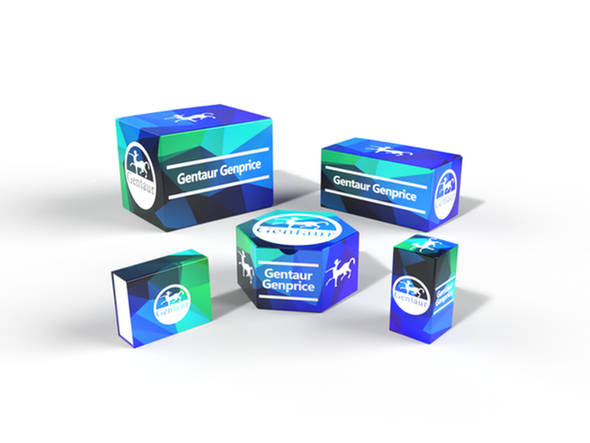740
Human Neuronal-specific septin-3 (SEPT3) ELISA Kit | AE22839HU
- SKU:
- 740-AE22839HU
- Availability:
- Usually ships in 5 working days
Description
Human Neuronal-specific septin-3 (SEPT3) ELISA Kit | AE22839HU | Gentaur UK, US & Europe Distribution
Species Reactivity: Human (Homo sapiens)
Abbreviation: SEPT3
Alternative Name: CTA-250D10.3; MGC133218; SEP3; bK250D10.3; neuronal-specific septin 3
Application: ELISA
Range: 0.312-20 ng/mL
Sensitivity: 0.123 ng/mL
Intra-Assay: ≤5.1%
Inter-Assay: ≤7.3%
Recovery: 0, 99
Sample Type: Serum, Plasma, Other biological fluids
Detection Method: Sandwich
Analysis Method : Quantitive
Test Principale: This assay employs a two-site sandwich ELISA to quantitate SEPT3 in samples. An antibody specific for SEPT3 has been pre-coated onto a microplate. Standards and samples are pipetted into the wells and anySEPT3 present is bound by the immobilized antibody. After removing any unbound substances, a biotin-conjugated antibody specific for SEPT3 is added to the wells. After washing, Streptavidin conjugated Horseradish Peroxidase (HRP) is added to the wells. Following a wash to remove any unbound avidin-enzyme reagent, a substrate solution is added to the wells and color develops in proportion to the amount of SEPT3 bound in the initial step. The color development is stopped and the intensity of the color is measured.
Product Overview: Neuronal-specific septin-3 belongs to the septin family of GTPases. Members of this family are required for cytokinesis. Expression is upregulated by retinoic acid in a human teratocarcinoma cell line. The specific function of this gene has not been determined. Alternative splicing of this gene results in multiple transcript variants. SEP3 shares almost 100% sequence identity with mouse neuronal-specific septin-3 and rat brain-specific G-septin. Alternative splicing leads to 3 SEP3 isoforms, SEP3A, SEP3B, and SEP3C, which encode proteins of 345, 337, and 71 amino acids, respectively. SEP3A and SEP3B contain a set of consensus sequence motifs for GTP binding, 2 predicted phosphorylation sites for PKG, and a conserved binding motif for SH3 domain-containing proteins.
Stability: The stability of ELISA kit is determined by the loss rate of activity. The loss rate of this kit is less than 5% within the expiration date under appropriate storage condition. The loss rate was determined by accelerated thermal degradation test. Keep the kit at 37°C for 4 and 7 days, and compare O.D.values of the kit kept at 37°C with that of at recommended temperature. (referring from China Biological Products Standard, which was calculated by the Arrhenius equation. For ELISA kit, 4 days storage at 37°C can be considered as 6 months at 2 - 8°C, which means 7 days at 37°C equaling 12 months at 2 - 8°C) .






